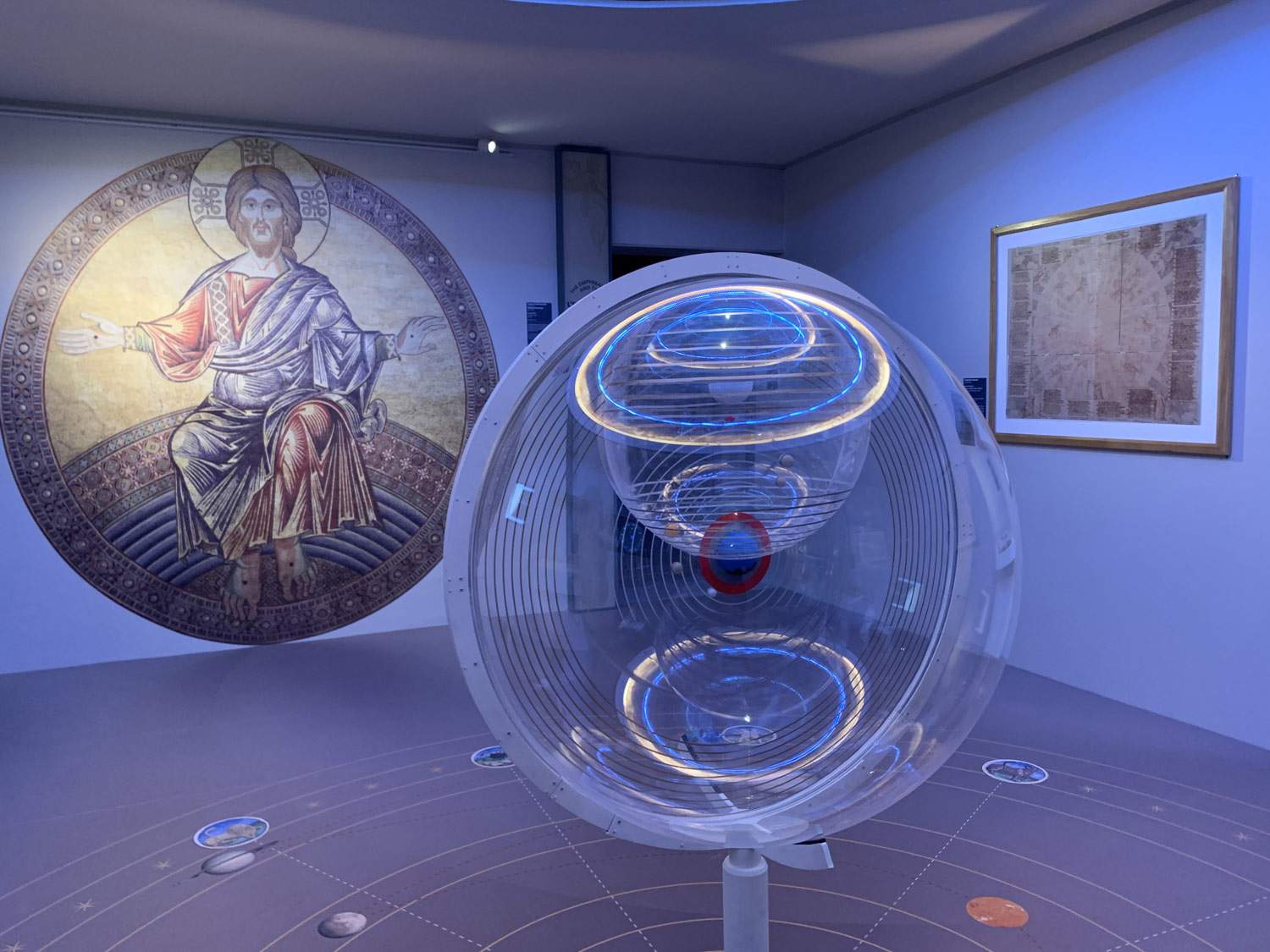Uffizi and Museo Galileo dedicate exhibition to Dante scientist
To conclude the countless initiatives on Dante Alighieri for the celebration of the 700th anniversary of his death, an exhibition about Dante the scientist arrives in Florence . From Hell to Empyrean. Dante’s World Between Science and Poetry is the title of the exhibition that Museo Galileo and Gallerie degli Uffizi are dedicating to the Supreme Poet, scheduled in Florence ’s Palazzo Pitti from Dec. 14 to March 6, 2022. In the display curated by Museo Galileo’s deputy director Filippo Camerota, joined by a panel of scholars who are part of the exhibition’s scientific committee, manuscripts, drawings, engravings, maps of an imagined afterlife, scientific instruments and video reproductions depict the Earth and the cosmological structure of the Universe as they were known to the father of Comedy.
Plus immersive multimedia films and projections. Taking its cue from Galileo’s academic lectures on measurement and location in Dante’s Inferno - where the scientist called the poet a “chorographer and architect” - the exhibition frames Dante’s scientific expertise in the culture of his time, profiling Alighieri as a physician, abbachista, geométra, ’geologist’ and cosmographer. Passages from the Commedia, the Convivio and the Questio de aqua et terra are illustrated through the display of artworks, manuscripts, three-dimensional models and multimedia products that illustrate the cosmological system, physical geography and spiritual geography of Dante’s works.
Special emphasis is given to the relationship with Islamic culture that interested the Supreme Poet, who was deeply familiar with the natural philosophy of Averroes, the medical science of Avicenna, and the astronomical work of Al-Farghani. From Al-Farghani’s KitÄb fÄ« Ä£iawÄm i’’ilm an-nuÄ£iÅ«m (known in the West as Liber de aggregationibus scientiae stellarum in Gherardo da Cremona’s Latin translation) almost all of Alighieri’s astronomical information is derived. The sections of the exhibition ideally replicate the tripartition of the Comedy. The exhibition route is marked by three rooms representing the three cantica. In the first, Inferno, the visitor finds himself immersed in the bowels of the Earth; looking up at the domed roof, he sees the emerging lands from the inside, that is, from the point of view of Lucifer, whose immense body stands suspended at the apex of the great conical chasm that houses the souls of the damned. In Purgatory, the room is covered by the starry sky of the southern hemisphere, there where Dante imagines he will find himself once he comes out to see the stars again. In the last one, Paradise, the visitor finds himself suspended between the material world, reproduced on the floor according to the Ptolemaic system, and the spiritual world, represented on the dome by the angelic hosts whirling whirling around the brightest point from which everything originates and toward which everything is stretched out.
In addition to valuable original works (manuscripts, prints, drawings, engravings, world maps and scientific instruments), high-resolution reproductions of non-transportable works, large three-dimensional models depicting the Earth and the cosmological structure of the Universe as they were known to Dante, and films made by the Museo Galileo’s Multimedia Laboratory are on display. A video produced by Infini.to-Planetario of Turin for the Italian Space Agency compares Dante’s world with modern explorations of the Solar System. In addition, thanks to two immersive multimedia projections produced by camerAnebbia, visitors are transported inside the extraordinary miniatures of a precious manuscript of the Comedy preserved at the British Library and can relive the experience of the cosmic journey into infinity undertaken by the Poet.
“Among the various sciences of which we find vestiges in Alighieri’s poetic work, cosmography,” explains Eike Schmidt, director of the Uffizi Galleries, “is surely the one that has the greatest relevance for our times, in which almost every year we are surprised by new discoveries and new theories about the conformation, genesis and fate of the infinite world that surrounds our small and fragile planet, and which regularly overturn what we have hitherto taken for certain. The Supreme Poet’s reconstructions and fantasies about the structure of the world will be able to provide insights for scientists who must look for metaphors to describe phenomena outside and far from the perception of our senses.”
“This exhibition,” explains Roberto Ferrari, Executive Director of the Museo Galileo, “offers visitors the opportunity to engage with lesser-known aspects of the Comedy that are sure to be of interest, including an appreciation of the distance between narrative and scientific knowledge; then reconstructing the links that united Dante and the culture of his time allows us even today to reaffirm the’importance of recognizing even in an exceptional work the imprint of a collective adventure of thought, an ’itinerary of the mind’ that in this original exhibition itinerary brings together contributions from an outstanding community of scholars, confirming Museo Galileo’s commitment to combine research activities and high popularization.”
“Dante,” points out exhibition curator Filippo Camerota, “was not really a scientist. He used science as a structural element of poetic invention and subordinated scientific truth to narrative needs. But it is precisely this structural element that makes the cosmographic tale credible; a tale that stages the inextricable relationship between the material world and the spiritual world.”
The exhibition is also available online at https://mostre.museogalileo.it/dante/, where information and insights can be found.
 |
| Uffizi and Museo Galileo dedicate exhibition to Dante scientist |
Warning: the translation into English of the original Italian article was created using automatic tools. We undertake to review all articles, but we do not guarantee the total absence of inaccuracies in the translation due to the program. You can find the original by clicking on the ITA button. If you find any mistake,please contact us.





























